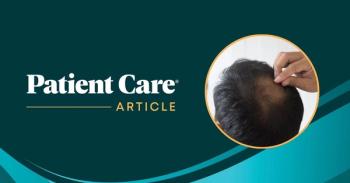
Basal Cell Carcinoma on Face of a 54-Year-Old Farm Worker
When this lesion was seen on the face of a 54-year-old farm worker, cutaneous melanoma was the immediate concern. Accordingly, a full-thickness excisional biopsy was performed. (Curettage and shave biopsy are contraindicated for a suspected melanoma.)
When this lesion was seen on the face of a 54-year-old farm worker, cutaneous melanoma was the immediate concern. Accordingly, a full-thickness excisional biopsy was performed. (Curettage and shave biopsy are contraindicated for a suspected melanoma.) Fortunately, the neoplasm proved to be a pigmented basal cell carcinoma (BCC), a rare form that has no greater tendency toward malignancy than nonpigmented types.
Dr Luis Lomeli of Rancho Cucamonga, Calif, comments that there are at least 5 variants of BCC, which account for more than 75% of skin cancers. These tumors may spread deeply or widely into adjacent structures. The morphea-like and keratotic types are 2 of the more aggressive forms. In addition to complete excision, other treatment for histologically proven, nonaggressive BCC includes cryosurgery or electrodesiccation with curettage.
Because patients who have had one BCC are likely to have others, and because the growths may recur within 10 years, long-term follow-up is essential. Warn patients to reduce future exposure to UV irradiation by wearing appropriate clothing and using sunscreens with a sun-protective factor greater than 15.
Newsletter
Enhance your clinical practice with the Patient Care newsletter, offering the latest evidence-based guidelines, diagnostic insights, and treatment strategies for primary care physicians.


















































































































































































































































































